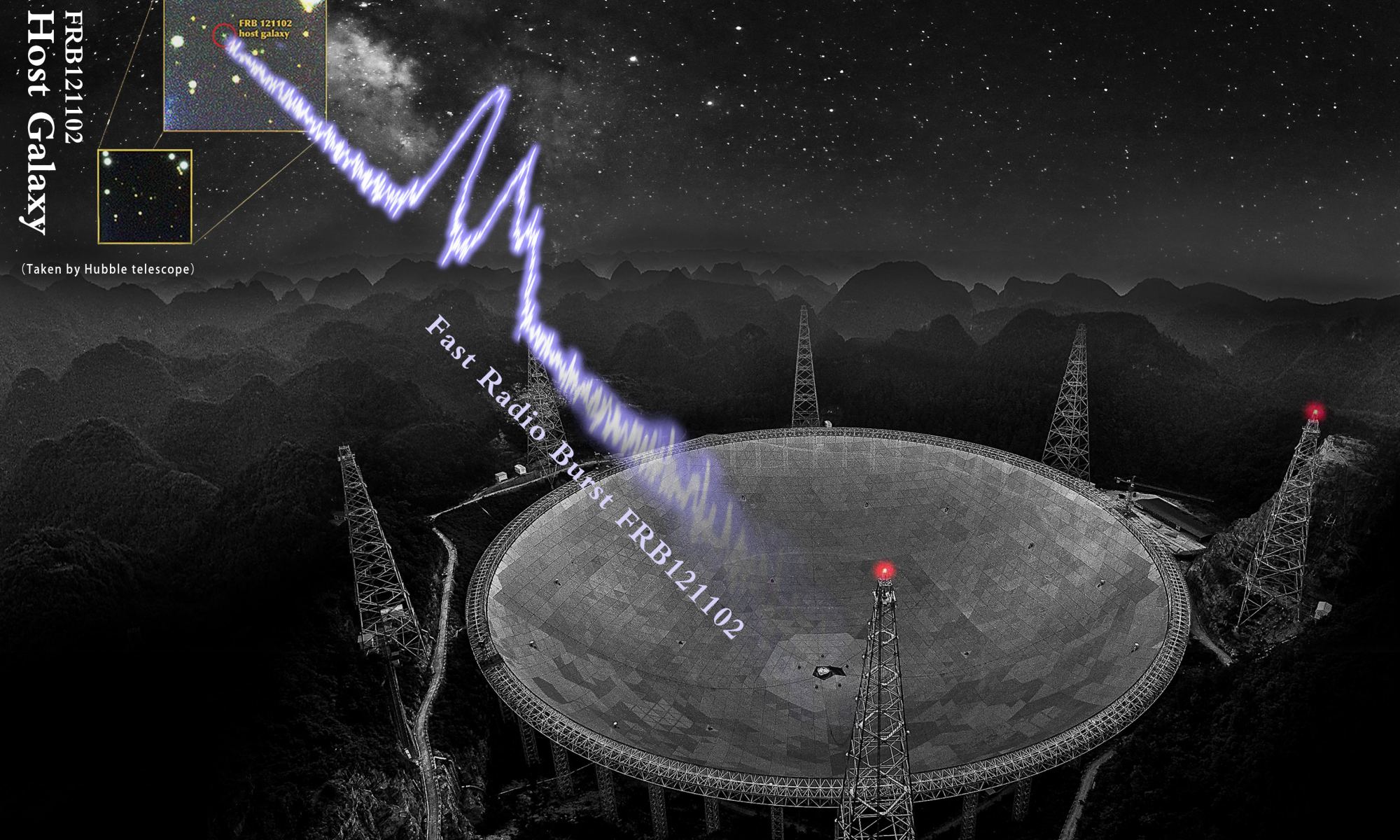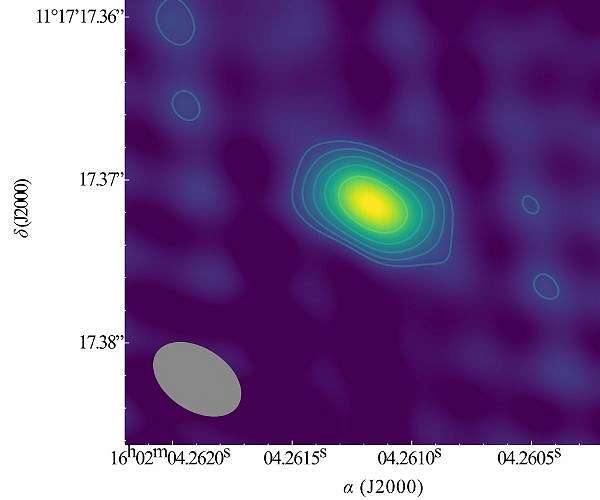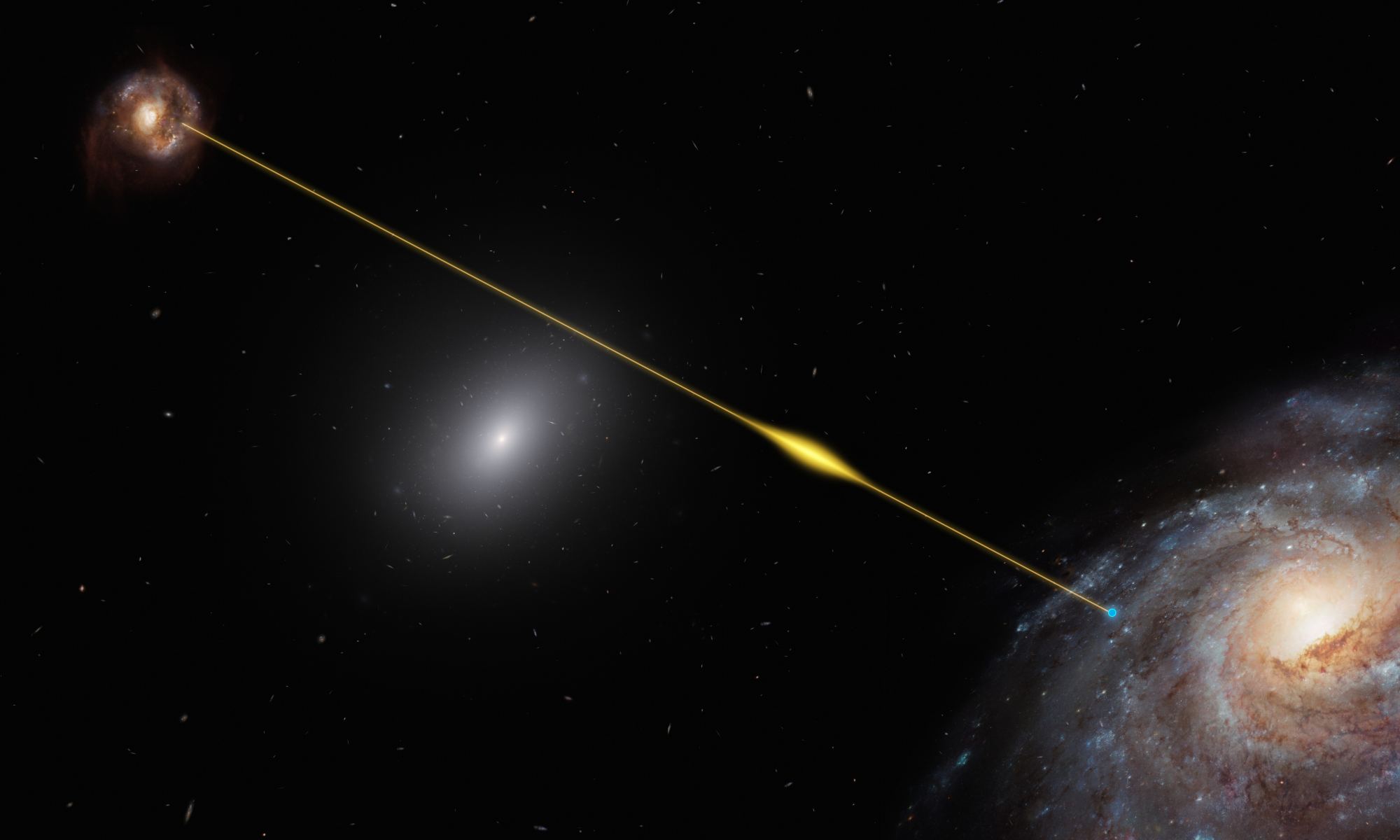Now and then there is a bright radio flash somewhere in the sky. It can last anywhere from a few milliseconds to a few seconds. They appear somewhat at random, and we still aren’t sure what they are. We call them fast radio bursts (FRBs). Right now the leading theory is that they are caused by highly magnetic neutron stars known as magnetars. With observatories such as CHIME we are now able to see lots of them, which could give astronomers a new way to measure the rate of cosmic expansion.
Continue reading “Measuring Distances in the Universe With Fast Radio Bursts”Hubble Shows That a Fast Radio Burst Came From a Giant Group of Galaxies
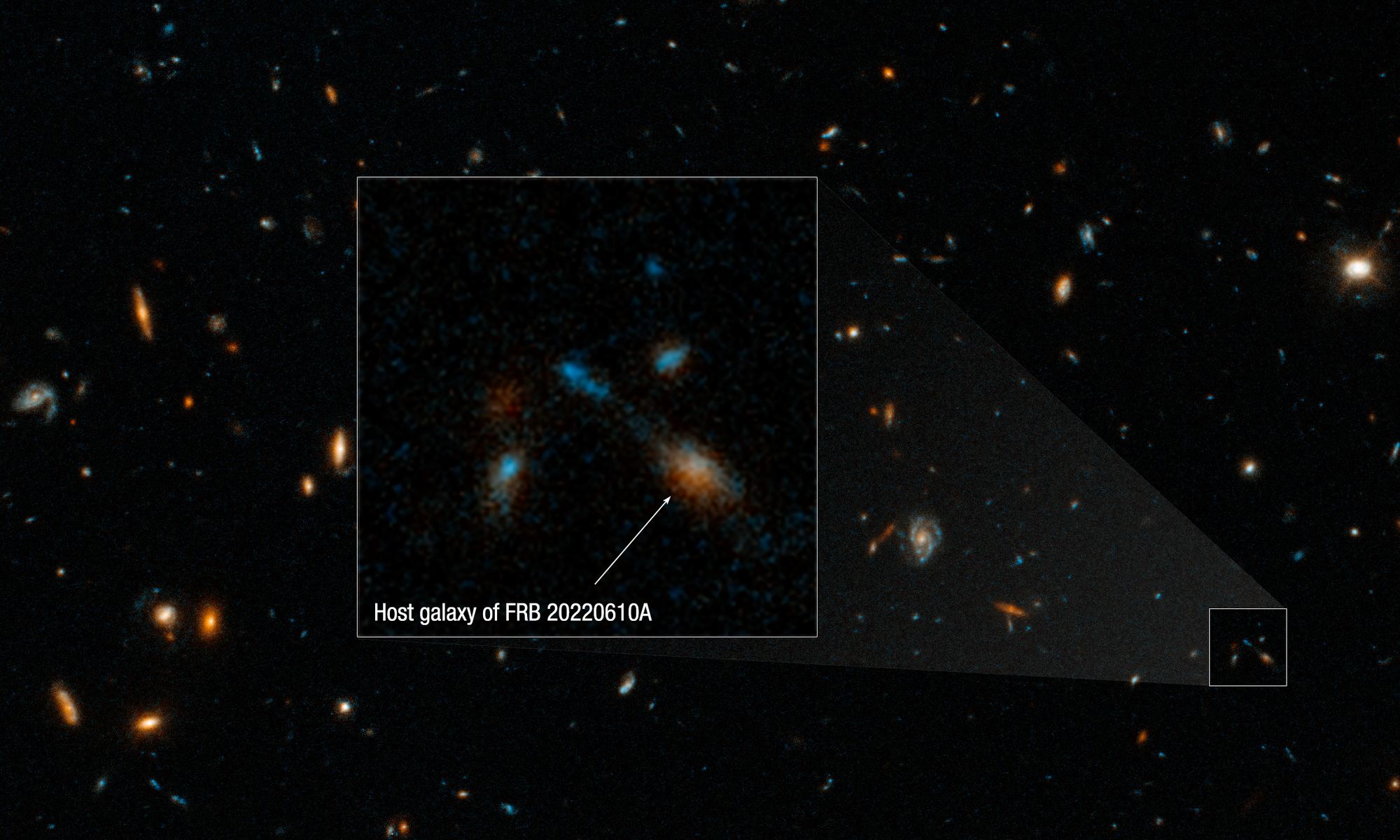
Way back when the cosmos was only five billion years old, a powerful explosion happened in a group of young galaxies halfway across the Universe. It sent out a blast of radiation from one member of that distant galaxy group.
Continue reading “Hubble Shows That a Fast Radio Burst Came From a Giant Group of Galaxies”Another Fast Radio Burst is Coming from a Hypernebula. Also, Hypernebulae are a Thing
If nothing else catches your attention in the title then surely ‘hypernebula’ does! There are some amazing processes scattered around the cosmos, of particular interest are the fast radio bursts (FRB). These brief flashes of radiation happen without warning…until now. A team in the Netherlands have identified a second FRB as coming from within a hyper nebula – a dense and highly magnetised cloud of plasma that is illuminated by a powerful but unknown source!
Continue reading “Another Fast Radio Burst is Coming from a Hypernebula. Also, Hypernebulae are a Thing”A Fast Radio Burst Took 8 Billion Years to Reach Us
Fast Radio Bursts are an astrophysical enigma. They are intense bursts of radio energy lasting anywhere from a fraction of a millisecond to a few seconds, typically with a frequency of around 1,400 MHz, and we still don’t know what causes them. They were first detected in 2007 but were initially so rare and short-lived that it was difficult to confirm they weren’t terrestrial in origin. With the inauguration of the CHIME telescope and other wide-field radio observatories, we started observing lots of them, which confirmed they were both astrophysical and mostly coming from outside our galaxy. Now one has been observed from a galaxy 8 billion light years away, and it could help us solve a cosmological mystery.
Continue reading “A Fast Radio Burst Took 8 Billion Years to Reach Us”Now Astronomers have Discovered “Ultra-Fast Radio Bursts” Lasting Millionths of a Second

A recent study published in Nature Astronomy examines the discovery of what astronomers are dubbing “ultra-fast radio bursts”, a new type of fast radio bursts (FRBs) that the team determined lasts for a mind-boggling ten millionths of a second or less. Traditionally, FRBs have been found to last only thousandths of a second, but this study builds on a 2021 study that hypothesized FRBs could possibly last for millionths of a second. This also comes after astronomers recently announced the discovery of the oldest and farthest FRB ever observed, approximately 8 billion light-years from Earth.
Continue reading “Now Astronomers have Discovered “Ultra-Fast Radio Bursts” Lasting Millionths of a Second”Astronomers Watched a Fast Radio Burst Go Right Through a Star’s Atmosphere
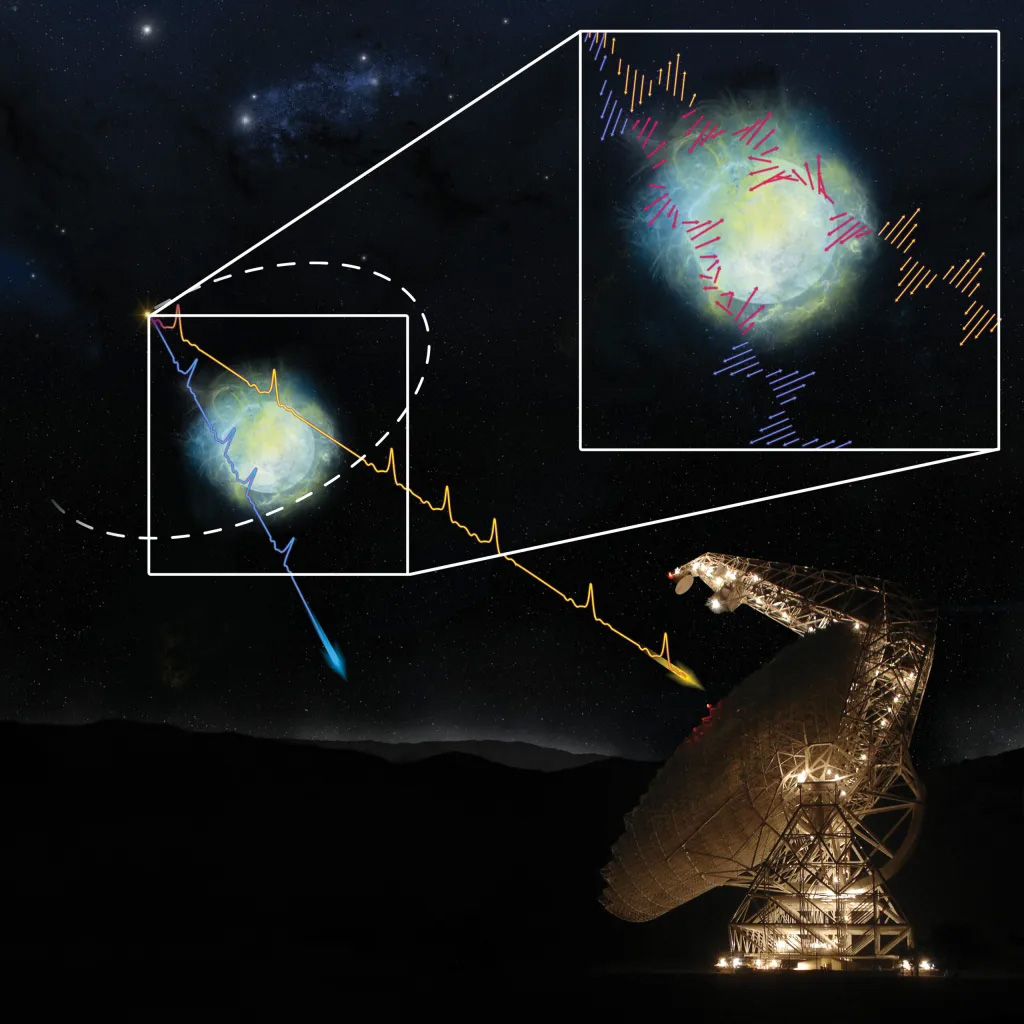
The universe is filled with things that go flash in the night. That includes fast radio bursts (FRBs). These are brilliant, powerful blips of radio emissions from distant and mysterious sources. Astronomers studying one called FRB 20190520B noticed something fascinating about its signals. They get polarized as they travel outward from the source.
Continue reading “Astronomers Watched a Fast Radio Burst Go Right Through a Star’s Atmosphere”Three Fast Radio Bursts Punched Right Through a Nearby Galaxy
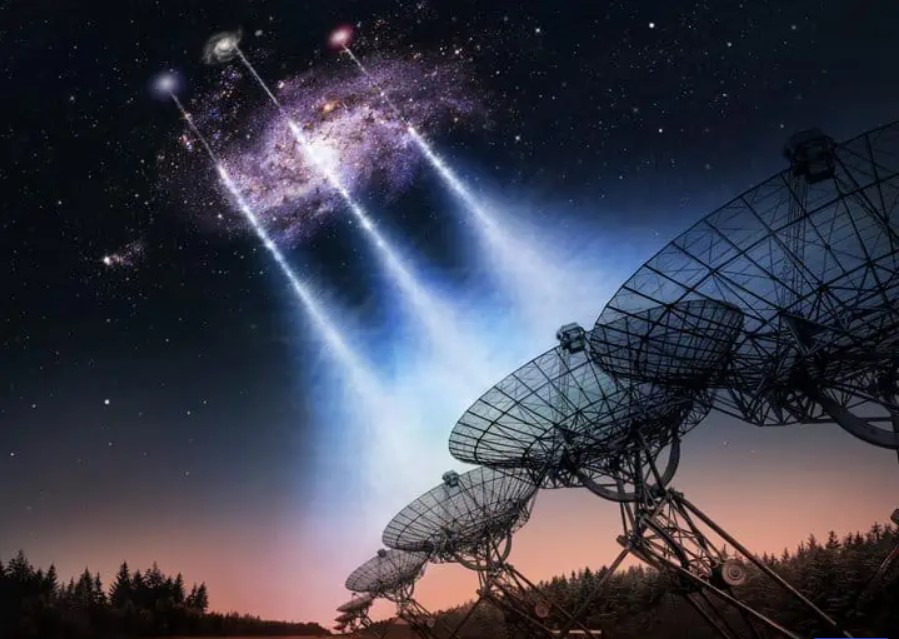
Fast Radio Bursts (FRBs) are cosmic mysteries that are slowly but surely revealing their secrets. These bright flashes of light are visible in the radio wave part of the spectrum and usually last only a few milliseconds before fading away forever. They come from random locations across the Universe and are so powerful that we can see them emanating from billions of light-years away.
Astronomers have used a newly upgraded radio telescope array to find five new FRBs and discovered that multiple bursts pierced right through the Triangulum Galaxy (M33). These brief flashes lit up the gas inside M33, allowing astronomers to calculate the maximum number of otherwise invisible atoms.
Continue reading “Three Fast Radio Bursts Punched Right Through a Nearby Galaxy”Gravitational Waves From Colliding Neutron Stars Matched to a Fast Radio Burst
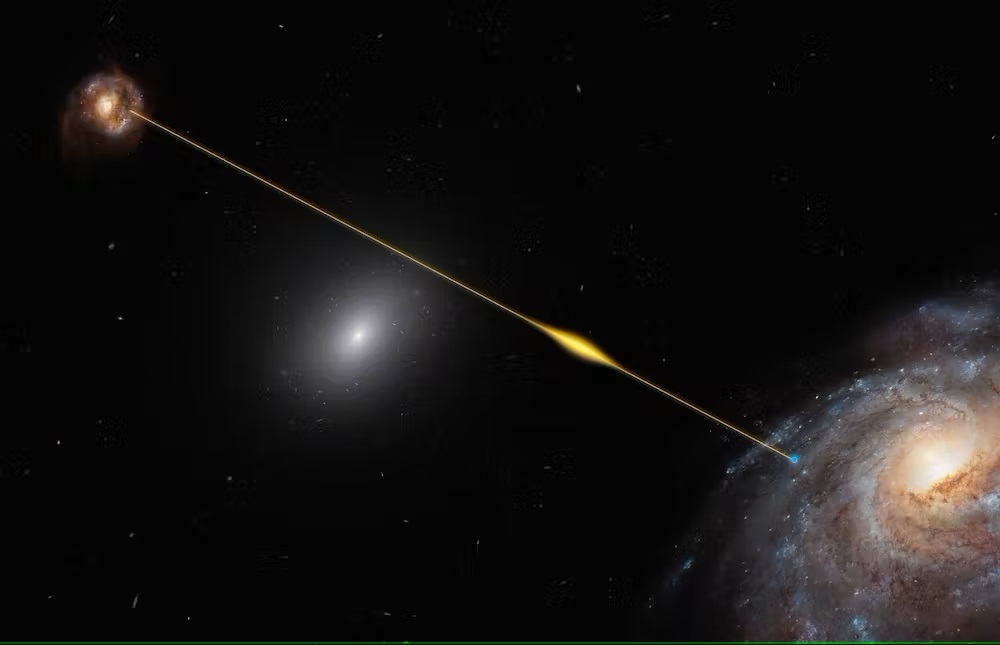
Fast Radio Bursts (FRBs) were first detected in 2007 (the Lorimer Burst) and have remained one of the most mysterious astronomical phenomena ever since. These bright radio pulses generally last a few milliseconds and are never heard from again (except in the rare case of Repeating FRBs). And then you have Gravitational Waves (GW), a phenomenon predicted by General Relativity that was first detected on September 14th, 2015. Together, these two phenomena have led to a revolution in astronomy where events are detected regularly and provide fresh insight into other cosmic mysteries.
In a new study led by the Australian Research Council Centre of Excellence for Gravitational Wave Discovery (OzGrav), an Australian-American team of researchers has revealed that FRBs and GWs may be connected. According to their study, which recently appeared in the journal Nature Astronomy, the team noted a potential coincidence between a binary neutron star merger and a bright non-repeating FRB. If confirmed, their results could confirm what astronomers have expected for some time – that FRBs are caused by a variety of astronomical events.
Continue reading “Gravitational Waves From Colliding Neutron Stars Matched to a Fast Radio Burst”Astronomers Find 25 Fast Radio Bursts That Repeat on a Regular Basis
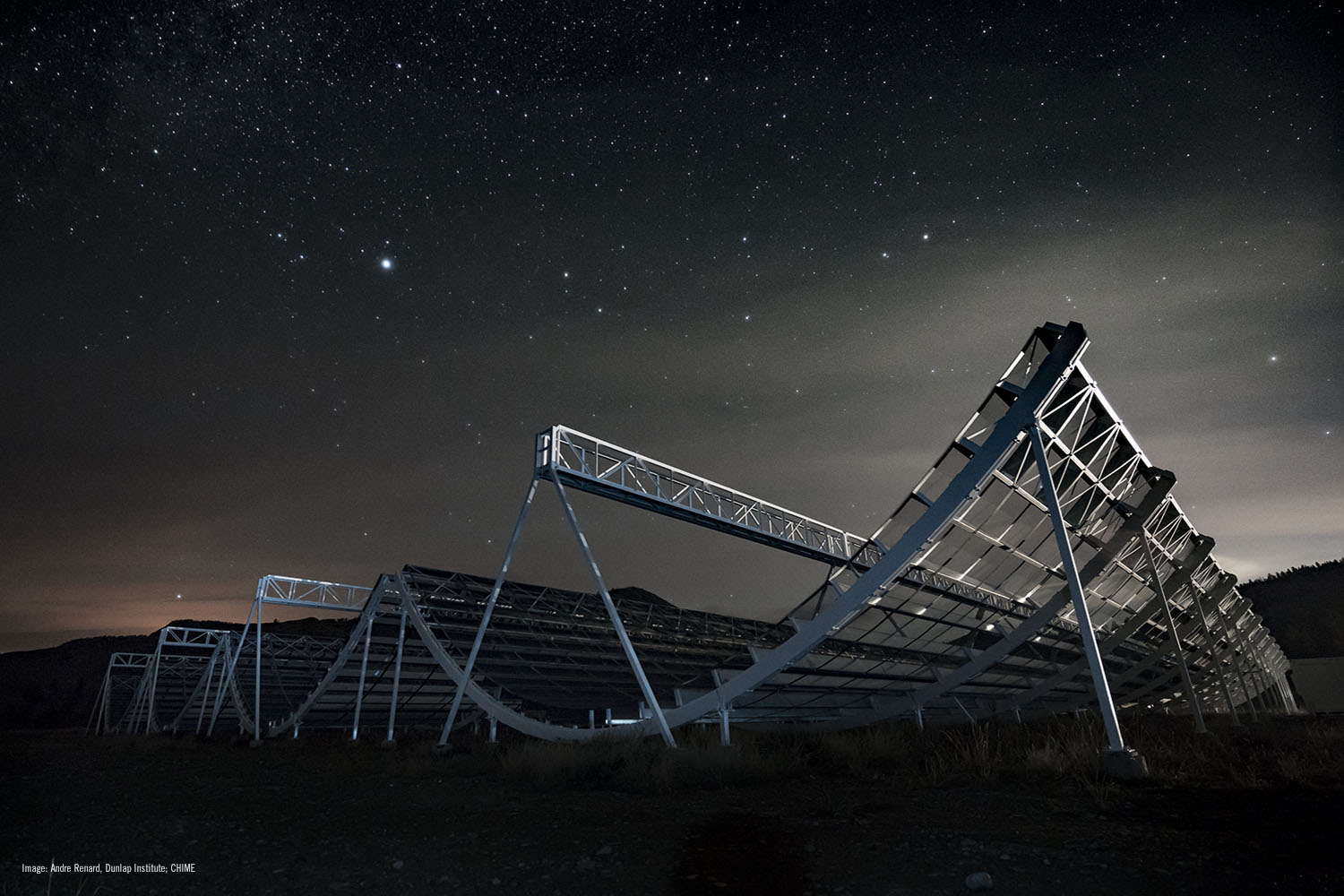
Like Gravitational Waves (GWs) and Gamma-Ray Bursts (GRBs), Fast Radio Bursts (FRBs) are one of the most powerful and mysterious astronomical phenomena today. These transient events consist of bursts that put out more energy in a millisecond than the Sun does in three days. While most bursts last mere milliseconds, there have been rare cases where FRBs were found repeating. While astronomers are still unsure what causes them and opinions vary, dedicated observatories and international collaborations have dramatically increased the number of events available for study.
A leading observatory is the Canadian Hydrogen Intensity Mapping Experiment (CHIME), a next-generation radio telescope located at the Dominion Radio Astrophysical Observatory (DRAO) in British Columbia, Canada. Thanks to its large field of view and broad frequency coverage, this telescope is an indispensable tool for detecting FRBs (more than 1000 sources to date!) Using a new type of algorithm, the CHIME/FRB Collaboration found evidence of 25 new repeating FRBs in CHIME data that were detected between 2019 and 2021.
Continue reading “Astronomers Find 25 Fast Radio Bursts That Repeat on a Regular Basis”Astronomers Used a Fast Radio Burst to Probe the Structure of the Milky Way
In the past decade and a half, hundreds of Fast Radio Bursts (FRBs) have been detected by astronomers. These transient energetic bursts occur suddenly, typically last for just a few milliseconds, and are rarely seen again (except in the rare case of repeating bursts). While astronomers are still not entirely sure what causes this phenomenon, FRBs have become a tool for astronomers hoping to map out the cosmos. Based on the way radio emissions are dispersed as they travel through space, astronomers can measure the structure and distribution of matter in and around galaxies.
Using the Deep Synoptic Array (DSA) at the Owens Valley Radio Observatory (OVRO), a team of astronomers from Caltech and Cornell University used an intense FRB from a nearby galaxy to probe the halo of hot gas that surrounds the Milky Way. Their results show that our galaxy has significantly less visible (“baryonic” or “normal”) matter than previously expected. These findings support theories that matter is regularly ejected from our galaxy due to stellar winds, supernovae, and accreting supermassive black holes (SMBHs).
Continue reading “Astronomers Used a Fast Radio Burst to Probe the Structure of the Milky Way”
